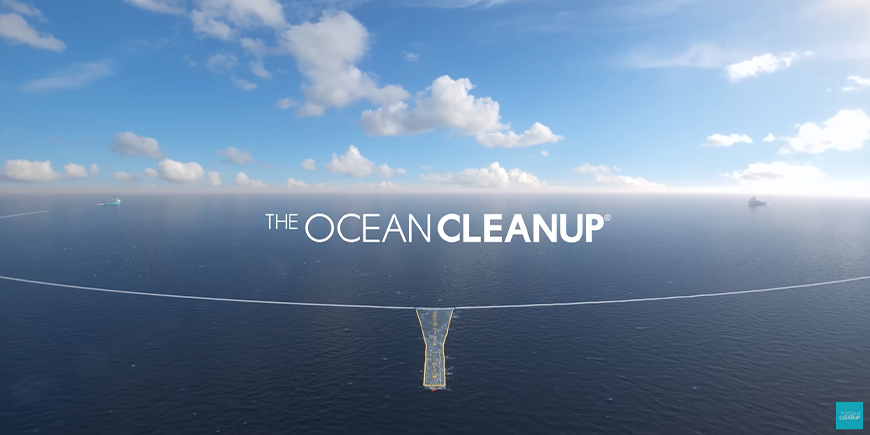In a new video, the non-profit organisation The Ocean Cleanup shows how it is tackling the Great Pacific Garbage Patch.
Plastic pollution is one of the most worrying forms of pollution today. It is estimated that between 4 and 12 million tonnes of plastic end up in the seas around the world each year, causing 80% of marine pollution.
More than half of the plastic waste in the oceans is blown in by the wind or washed in by urban run-off and rivers; the rest is generated directly by ships sailing the seas.
The Ocean Cleanup
Founded in 2013 by Dutch inventor and entrepreneur Boyan Slat, who was 19 at the time, the organisation aims to solve the problem of plastic in the oceans, and in particular to clean up the Great Pacific Garbage Patch (GPGP), located between Hawaii and California.
Covering an area twice the size of Texas, it is believed to be the largest accumulation of plastic in the world and is estimated to contain up to 1.8 trillion pieces of debris.
«Most of the debris is large, – said Boyan Slat. – It’s a ticking time bomb because all these large objects will break down into microplastics in the coming decades if we don’t act.». The massive plastic island is made up mainly of derelict fishing gear, such as nets and ropes, and is responsible for the deaths of thousands of whales, dolphins and seals every year.
Currently, the foundation has a team of over 80 people, including researchers and engineers, who work every day to combat marine debris.
Boyan Slat’s goal is ambitious: to collect 90% of ocean plastic by 2040.
The evolution of the system
Since its founding and the introduction of its waste removal machines, The Ocean Cleanup has made significant progress, moving from the initial prototype called “System 001” to “System 002“, and now to the much larger and more efficient “System 003“. This new system can collect plastic at a rate up to 10 times faster than its predecessor.
These new machines will have a U-shape and a length of 2,500 metres. They will be towed by vessels that utilise ocean currents to funnel plastic waste into a collection chamber, which will be emptied once the vessels return to shore.






The new video
The video published on the organisation’s official website shows these powerful machines in action and explains that 10 of these advanced systems would be enough to significantly reduce the problem of oceanic waste.


